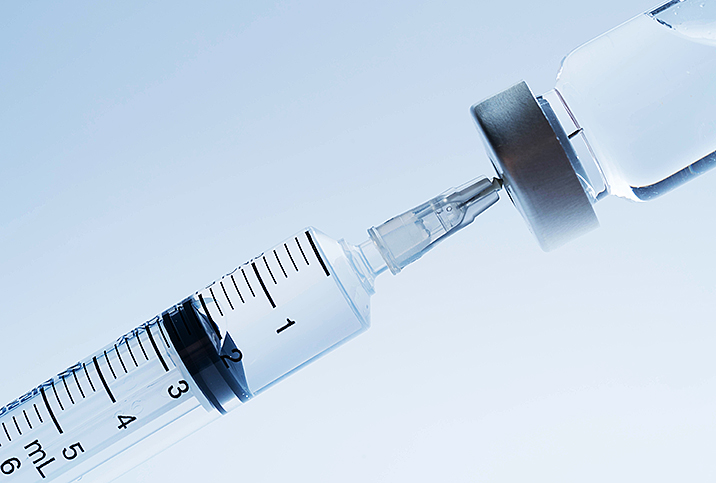Treatment of HPV

Human papillomavirus (HPV) is the cause of the most common sexually transmitted infection (STI) in the United States and throughout the world. Almost 80 million Americans are currently living with HPV, according to the Centers for Disease Control and Prevention (CDC). Because HPV is so common and varied—the viral infection comes in more than 100 strains—a majority of sexually active individuals will get some variety of it at some point in their lifetime.
Overview of HPV
HPV is a virus that can be transmitted from skin-to-skin contact, meaning sexual intercourse is not required for transmission to occur. More than 40 types of HPV can infect the genital area—vagina, cervix, vulva, rectum, anus, penis and scrotum—and the mouth and throat. These types of HPV are spread through sexual contact. The impact of genital HPV can range from a mild infection to cancer.
Typically, HPV goes away by itself and does not cause any health problems. In fact, the CDC reports that 9 out of 10 cases resolve on their own within two years. However, some types of HPV cause genital warts and could potentially lead to cancer, including cervical cancer—a cancer of the lower part of the uterus that connects to the vagina. Anal, penile, vaginal and vulvar cancers have also been linked to HPV infection.
Prevention and treatment
The most significant modifiable risk factor for HPV is your number of sex partners. Having three or more partners in your life represents a six-fold increase in the risk of having one of the high-risk types of HPV. Having chlamydia, a very common STI, almost doubles your risk of developing human papillomavirus. Some researchers believe the cervical inflammation involved with chlamydia may make it easier to get HPV.
Wearing condoms during vaginal, anal and oral sex can help reduce your chances of getting HPV, but the virus can affect areas not covered by a condom. Use a clean, new dental dam for anal play or rimming. Use latex gloves for fisting. Be sure to wash sex toys after each use.
Although there is no cure for HPV, there are many things you can do to prevent the STI from having a negative impact on your health and well-being, including getting vaccinated, treating genital warts and, for women, getting a regular Pap test.
Vaccine
The HPV vaccine is recommended for males and females between the ages of 11 and 26. Three HPV vaccines—Gardasil, Gardasil 9 and Cervarix—have been approved by the FDA for use, but only Gardasil 9 is currently available in the U.S. All of them prevent HPV type 16 and 18 infections, two high-risk HPVs that cause about 70 percent of all cervical cancer cases. Gardasil 9 protects against all four common types of HPV along with an additional five strains. Most people older than 26 will not benefit from the vaccine (except in rare cases, then up to age 45), and the vaccine is not recommended for pregnant women or people who are moderately or severely ill.
Medications & procedures
Medications to get rid of warts are typically applied directly to the wart and usually take multiple applications before they work. If left untreated, warts might go away, stay the same or grow in number or size. Examples of medications that treat common warts and genital warts include:
- Trichloroacetic acid (TCA): This chemical treatment burns off warts. Trichloroacetic acid can be used for common warts as well as vaginal or anal lesions. Use a small amount and allow it to dry until a white frosting develops. TCA might cause local irritation.
- Imiquimod (brand names: Aldara, Zyclara): Imiquimod is in a group of drugs known as immune response modifiers. It works by helping to activate your immune system to fight genital warts. Common side effects include redness and swelling.
- Podophyllin and podofilox (brand name: Condylox): Podofilox is a topical gel that works by destroying the tissue of genital warts or common warts. Podofilox may cause burning and itching where it is applied. It is usually applied once in the morning and again in the evening for three days, followed by a four-day rest period.
- Sinecatechins (Veregen): This cream is used for the treatment of genital warts in and near the anal canal. Side effects may include reddening of the skin, pain, itching or burning.
- Salicylic acid: A gel or other solution containing salicylic acid works by removing layers of a wart a little at a time. Don't use full-strength salicylic acid directly on genital warts as this could potentially burn the skin and cause discomfort or infection.
A doctor might recommend and perform other wart treatments, including the following:
- Cryotherapy is freezing off warts using liquid nitrogen.
- Electrocauteryinvolves burning away warts using an electrical current.
- Laser or light therapy removes the unwanted tissue with a high-powered, targeted beam.
- Surgical removal involves cutting off warts through surgery; a local anesthetic is applied.
The best treatment option will depend on the type and location of the wart. While these treatments can remove the warts, the virus will remain in the body.
Loop electrosurgical excision procedure (LEEP)
A loop electrosurgical excision procedure may be performed after abnormal cells are discovered during a Pap test, or if cervical or vaginal issues are found during a pelvic exam. Using an electrical wire loop, the doctor extracts tissue from a woman's cervix and vagina, then sends it to a lab for testing. This procedure is used to further examine and treat precancerous conditions in the cervix or vagina.
Colposcopy
If your Pap smear indicates abnormal cells and you test positive for HPV, a colposcopy may help confirm potential problems. Though it never enters the body, an instrument known as a colposcope gives doctors a lighted and magnified view of the woman's genital region, allowing them to find cancerous cells in the cervix, vagina or vulva. It can also help locate precancerous tissue, or abnormal cells, that have the potential to become cancerous. This procedure also looks for genital warts and polyps, or noncancerous growths.
Long-term effects
Among men, cancers related to HPV are rare, but according to the CDC, approximately 10 percent of women who have HPV on the cervix will develop long-term infections, placing them at risk for cervical cancer. When a high-risk type of the virus lingers and infects the cells of the penis, anus, vulva and vagina, it can cause cell changes known as precancers, which could eventually turn into cancer if they are not removed.
Fortunately, a vast majority of women with HPV will never develop cervical cancer. And with regular Pap smears and HPV tests, women are able to catch and treat potential health issues that could result from an infection. Keep up with routine screenings and keep an open line of communication with your doctor to learn more about prevention and treatment options for your unique situation.


















